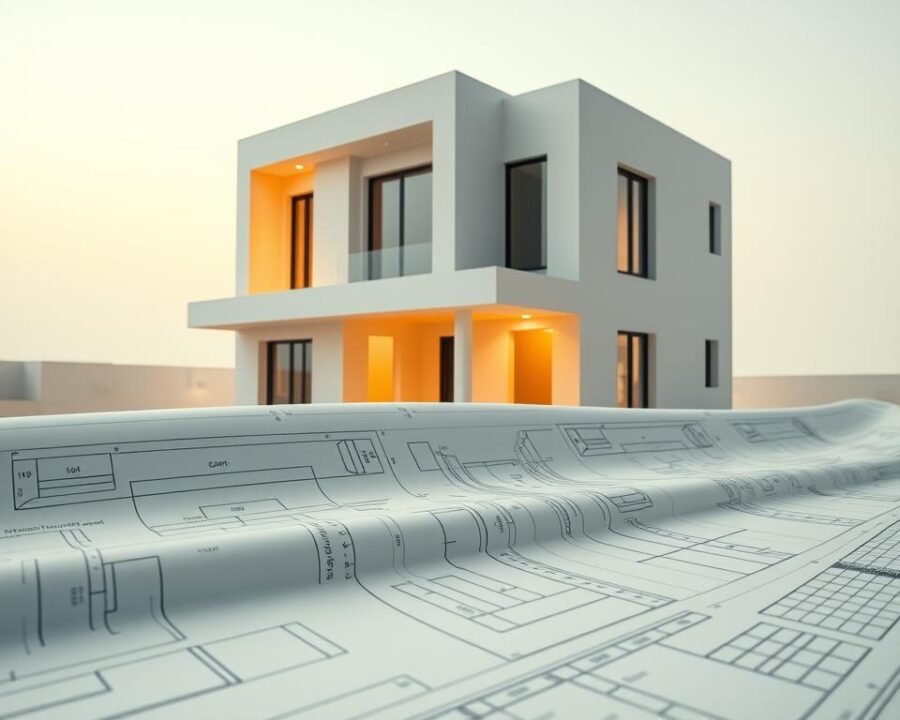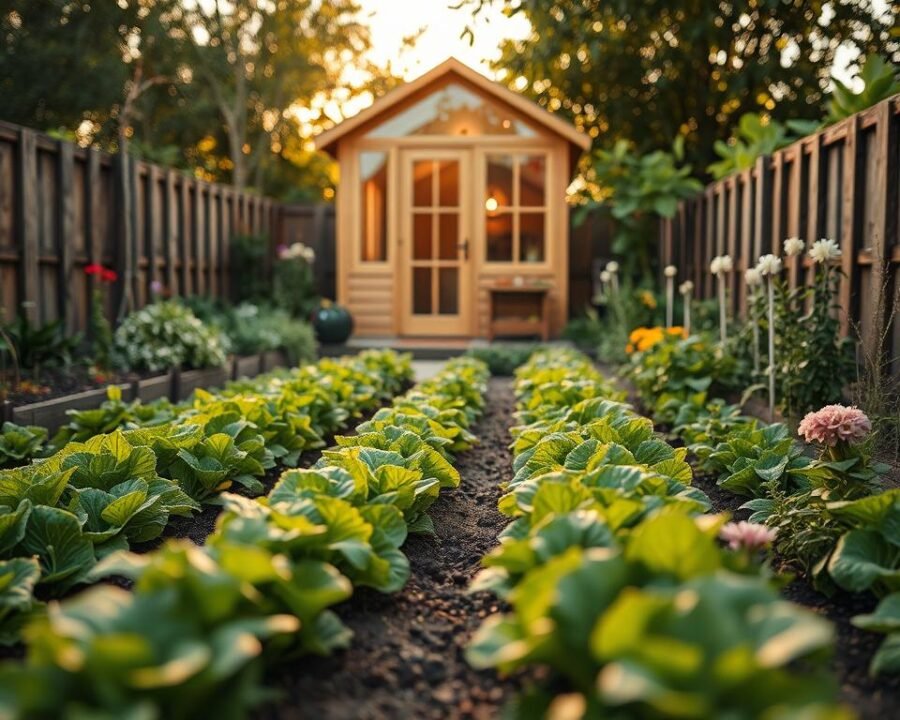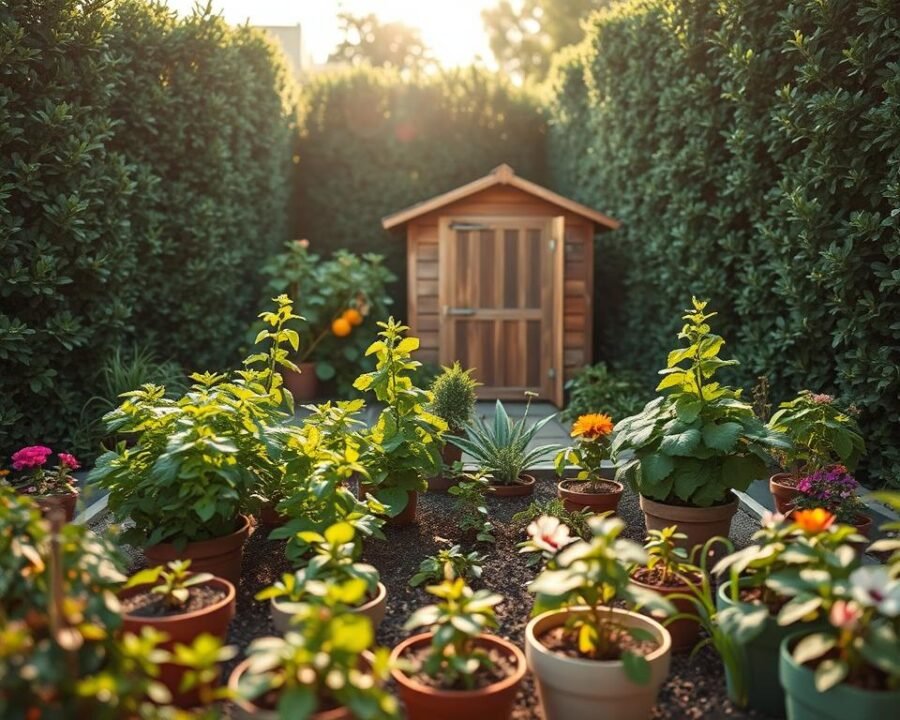Imagine a tiny haven in your backyard, a cozy retreat from daily life. Building a home on a small plot is an exciting idea. With careful planning and the right guidance, it can become a reality.
We’ll look at the possibilities and challenges of building on a 19ft garden plot. We’ll cover what to expect and the key things to consider. This includes local building rules and designing a space that’s both functional and comfortable.
Exploring tiny house construction, we’ll discuss what makes building on a small plot possible. With the right approach, we can create a beautiful home that meets our needs and fits well with the landscape.
Key Takeaways
- Understand local building regulations and zoning laws
- Carefully plan and design your tiny house
- Consider the challenges and opportunities of small plot construction
- Explore creative solutions for functional living spaces
- Ensure compliance with local building codes and standards
Understanding a 19ft Garden Plot Dimension
The size of a 19ft garden plot is key to its use. When planning to build a house on it, knowing its layout and size is crucial.
Managing a 19ft span is possible with the right framing. For example, using #2 Southern yellow pine 2x12s for floor joists works well. This method creates a strong base while keeping the house small.
What Does 19ft by Xft Look Like?
It’s hard to picture a 19ft by Xft plot without knowing the exact dimensions. A 19ft width is about the size of a two-car garage. With a depth of 30ft or 40ft, it’s big enough for a small to medium-sized home.
The design depends on the plot’s size and the chosen layout. For instance, a 19ft x 30ft plot (570 sqft) fits a cozy single-story home. A 19ft x 40ft plot (760 sqft) might allow for a bigger design or even a multi-story house.

Common Uses for Small Garden Plots
Small plots like a 19ft wide one are great for tiny homes, modular homes, or ADUs. They’re also good for gardens, outdoor spaces, or as part of a bigger property.
It’s important to know the local building codes and zoning laws for small plots. Following these rules is key to making sure the project can be done and meets all standards.
Understanding a 19ft garden plot’s size and uses helps in making smart building choices. Whether it’s a tiny home, modular construction, or a creative design, the goal is to use the space well and follow local building rules.
Zoning Laws and Building Regulations
Understanding zoning laws and building regulations is key for a successful small plot construction project. Following these rules is not just legal; it’s also important for a smooth project. It helps avoid legal problems along the way.
Local Zoning Requirements
Local zoning rules tell you how to use land in a certain area. For a 19ft garden plot, knowing these rules is crucial. These laws might limit what you can build, how tall it can be, and what materials to use. Always check with your local zoning office to see what’s allowed on your plot.
Some important things to think about include:
- Land use: Is your plot for homes?
- Building height and size: Are there limits on your building’s size and height?
- Setbacks: How close can your building be to property lines?
Building Codes to Consider
Building codes are also vital for a small plot house. These codes make sure buildings are safe, easy to get around, and can handle different weather conditions. For a house construction on small land, following these codes is about quality and safety, not just avoiding trouble.
Some important building codes to look at include:
- Structural integrity: Making sure your building can handle disasters and stress.
- Fire safety: Putting in place fire prevention and control measures.
- Accessibility: Making sure your building is easy for everyone to use, including those with disabilities.

By knowing and following local zoning laws and building codes, you can steer clear of problems. This makes your 19ft plot house building permit process smoother. It’s wise to talk to local officials and experts to make sure your project meets all the rules.
Assessing Land Use and Space Constraints
Building on a small plot requires knowing the land and space limits well. It’s key to use the area wisely. You’ll need to find creative ways to design around the small space.
Limitations of a Small Footprint
A small plot, like a 19ft garden, has its own set of problems. It limits how much you can build and design. The size can also affect how well the house works and feels.
For example, a narrow plot might mean a straighter design. This could limit what features or comforts you can add.
To beat these issues, focus on smart and creative design. Use spaces that do more than one thing. Make rooms work better together. Choose building parts that are small or can be put together easily.
Innovative Design Solutions
There are many ways to design around a small plot. Prefab or modular homes, like the Bastone Mobile Expandable Prefab House, are great for small spaces. They save space and are often green and energy-saving.
Other smart ideas include using vertical space with multi-story designs. Add hidden spots for storage. Use smart home tech to make living better. These ideas help make the most of a small plot, creating a cozy and useful home.

Understanding the land and space limits is key to building on a small plot. Knowing the challenges and finding creative solutions helps. This way, builders and homeowners can create homes that are both unique and practical, using every inch of space.
Finding the Right House Design for Small Lots
Building on a small lot requires the right house design. A well-designed home improves livability and looks great. It’s all about making the most of the space.
Prefabricated and modular homes are great for small garden plots. They save time and money. These modern designs are efficient and cost-effective.
Tiny Homes and Modular Options
Tiny homes and modular options are popular for small lots. They’re eco-friendly and offer flexibility. Tiny homes help reduce carbon footprint, while modular homes can be customized.
These homes make the most of space. They use multi-functional furniture and smart storage. This makes them feel spacious and cozy, despite their size.

Multi-Story Solutions
Multi-story homes are a smart choice for small lots. They add living space without increasing the footprint. This way, you get more room for living, working, and entertaining.
These homes can be designed for any need. Whether it’s a family home or a cozy retreat, they can be both functional and stylish. With good planning, they make the most of the space.
In conclusion, finding the right design for a small lot is key. By choosing a design that fits your needs, you can create a beautiful and functional home.
Permitting Process for a 19ft Plot
Before starting a 19ft garden plot, knowing local permits and timelines is key. The process can be tricky. Homeowners need to follow local rules carefully.
Navigating Local Permit Requirements
Start by contacting your local building department or permitting office. They will tell you what permits you need, how much they cost, and what documents are needed. Remember, rules can change based on where you are, zoning laws, and what you’re building.
Be ready to share detailed plans and specs for your project. You might need to submit architectural drawings and engineering reports. The office will check these to make sure they meet local codes and rules.
Timeframe for Permit Approval
The time it takes to get a permit can vary a lot. It depends on how complex your project is, how busy the office is, and if your documents are complete. It can take from a few weeks to several months.
To avoid delays, make sure your plans and documents are right. Also, keep in touch with the office to check on your application and fix any problems quickly.
| Permit Type | Typical Timeframe | Required Documents |
|---|---|---|
| Building Permit | 2-6 weeks | Architectural drawings, engineering reports |
| Electrical Permit | 1-3 weeks | Electrical diagrams, inspection reports |
| Plumbing Permit | 1-3 weeks | Plumbing diagrams, inspection reports |
Knowing about permits and timelines helps plan your project better. It’s important to work with local authorities and experts for a smooth process.
Infrastructure Needs for Small Properties
Building a house on a small plot needs careful planning. You must ensure services like water, sewage, and electricity are provided well. It’s key to think about how these services will reach your home.
Access to clean water and proper sewage disposal is crucial for any property. On small plots, this can be hard due to space or local rules. But, there are solutions. For example, using a septic system or a composting toilet can work well, especially where municipal sewers aren’t available.
Water and Sewage Solutions
Rainwater harvesting is a smart choice for small properties. It helps cut down on water bills and supports a green lifestyle. Also, greywater systems can be used in small plots. They let you reuse water for irrigation and flushing toilets, saving potable water.
Electrical Systems on a Small Plot
Electrical systems on small plots need careful planning. They must meet household needs without risking safety or looks. Knowing local building codes is key for electrical needs. Prefab homes might need extra setup for utilities like electricity, but this can be done efficiently during building.
Using energy-efficient appliances and solar power systems can lower electrical needs. This makes your home more sustainable and saves money over time. Adding smart home technology can also help manage energy use, making your electrical system more efficient.
With the right planning and infrastructure, you can build a cozy and green home on a small plot. Enjoy a comfortable and sustainable living space.
Cost Considerations for Building on a Small Plot
Building on a small plot comes with its own set of costs. It’s important to know what these costs are. They include many expenses that need to be planned out carefully.
Budgeting for Construction Expenses
Planning your construction budget for a small plot is key. You need to understand the costs of land prep, foundation work, and building on small property. These costs can change a lot based on the project’s size and details. Prefab homes might be cheaper, but remember to add in costs for electrical and plumbing.
| Expense Category | Estimated Cost |
|---|---|
| Land Preparation | $5,000 – $10,000 |
| Foundation Work | $10,000 – $20,000 |
| Prefabricated Home | $30,000 – $60,000 |
| Electrical and Plumbing | $8,000 – $15,000 |
Long-Term Value and Investment
Thinking about the long-term value of your small plot is vital. The upfront costs are big, but the long-term gains are worth it. These gains include property value increase and lower upkeep costs. By following small plot construction rules and making smart choices, you can get the most out of your investment.
In summary, planning for a small plot involves careful budgeting and thinking about long-term value. By considering these aspects, you can make smart choices for your project.
Landscaping and Outdoor Space Utilization
Landscaping a small garden plot needs creativity and new ideas. It’s key to think about how it looks and works. This is especially true for tiny house gardens.
Vertical gardening is a great way to use space. Homeowners can grow herbs, veggies, or flowers on walls and fences. This adds beauty and extra growing space.
Creative Landscaping Ideas
Here are some creative ideas for small gardens:
- Use multi-level planters for depth and interest
- Add outdoor lighting to highlight features and create mood
- Choose compact plants that fit small spaces
Outdoor Living on a Small Lot
Living outdoors on a small lot needs careful planning. It’s important to make different areas for dining, relaxing, or fun.
For tiny house gardens, following local building laws is crucial. This ensures outdoor features and landscaping meet local rules.
By using these ideas, homeowners can make a beautiful and useful outdoor space. It’s all about making the most of a small garden plot.
Community Insights and Examples
Building a home on a small garden plot can be easier with community help. Hearing from those who’ve done it before can guide us. Their experiences offer valuable knowledge for our projects.
Successful Builds on Similar Lots
Many homeowners have built on small plots and shared their stories. For example, a tiny house on wheels in British Columbia shows how to design for small spaces. These examples prove that with the right planning, you can create a cozy and functional home.
Some important lessons from these successful builds are:
- Use vertical space with multi-story designs
- Create multi-functional rooms to save space
- Make the most of outdoor areas to enhance indoor living
Lessons from Small Plot Homeowners
Homeowners who’ve built on small plots often share similar lessons. One key lesson is the need for flexible design and planning. Being open to new ideas, like modular or tiny homes, can help overcome building challenges.
Also, it’s crucial to understand and follow local building regulations. Ignoring these can lead to delays or even stop your project. Homeowners advise to research and follow these rules early to avoid problems.
Some key lessons from small plot homeowners include:
- Choose simple and minimal designs
- Focus on what you need, not what you want, to use space wisely
- Start by talking to the local community and regulatory bodies
Conclusion: Is Building Feasible on a 19ft Garden Plot?
Exploring building on a 19ft garden plot shows both pros and cons. The success of building a house on small land depends on design, local rules, and infrastructure.
We talked about the need to know zoning laws and understand space limits. We also looked at finding the right design for small lots. Plus, we covered the permitting process, costs, and landscaping ideas for small spaces.
Weighing the Pros and Cons
Building on a 19ft garden plot has its challenges. But it also brings chances for creative designs and solving problems. By thinking about the pros and cons, you can make smart choices for your project.
Next Steps for Interested Buyers
If you’re thinking about building on a 19ft garden plot, talk to local experts. This includes architects, builders, and zoning officials. With good planning, you can build a beautiful and functional home on small land.
FAQ
Can I build a house on a 19ft garden plot?
We can check if building a house on a 19ft garden plot is possible. We’ll look at local building rules and zoning laws.
What are the common uses for a small garden plot like 19ft?
Small garden plots like 19ft can be used for tiny homes or modular options. They can also be used for multi-story houses with careful planning.
What are the key building regulations to consider for a small plot?
We must follow local zoning rules and building codes. Getting the right permits for a small plot can be tricky and needs expert help.
How can I maximize space on a small footprint like 19ft?
We can find creative ways to use space on a small footprint. This includes tiny homes, modular options, and multi-story houses that use the land well.
What are the infrastructure needs for a small property like 19ft?
We must think about the infrastructure needs for a small property. This includes water, sewage, and electrical systems, which can be hard but have solutions.
How do I navigate the permitting process for a 19ft plot?
We can help you through the permitting process. We’ll talk about local permits and what to expect, making sure the construction goes smoothly.
What are the cost considerations for building on a small plot?
Building on a small plot has cost factors to consider. This includes budgeting for construction and thinking about long-term value and investment.
How can I utilize outdoor space on a small lot like 19ft?
We can find creative ways to use outdoor space on a small lot. This can make the property look better and be more functional.
What are the benefits and challenges of building on a small plot?
We can discuss the good and bad of building on a 19ft garden plot. This will help you make a well-informed decision.
What are some successful examples of builds on similar lots?
We can share stories of successful builds on similar lots. These stories and lessons learned can offer practical advice and inspiration.





